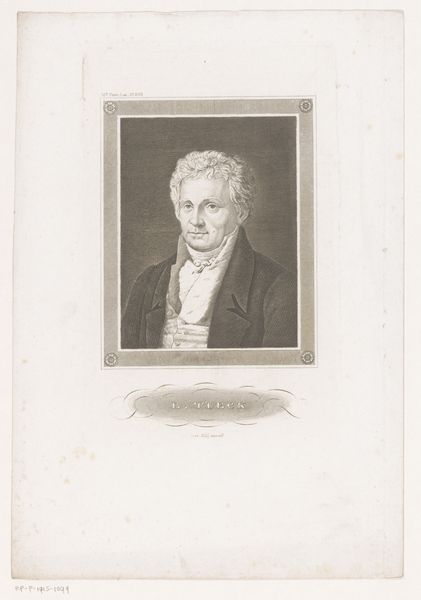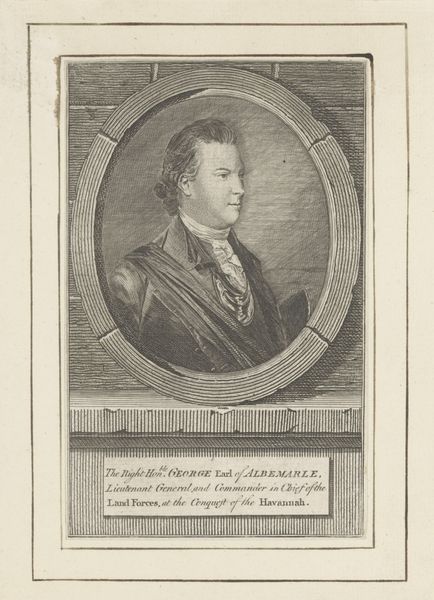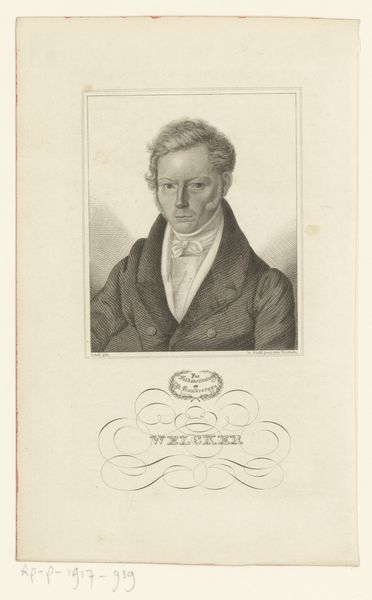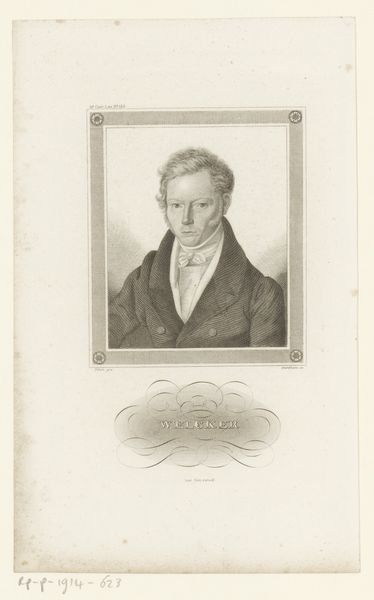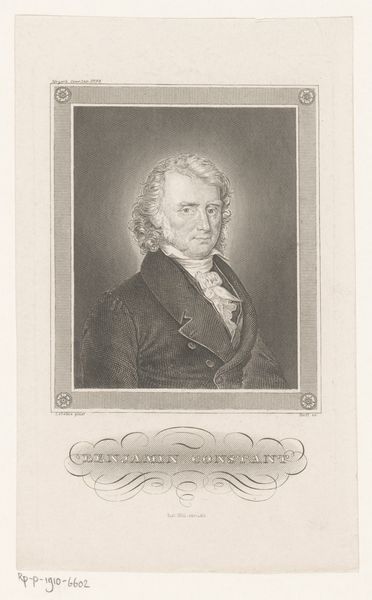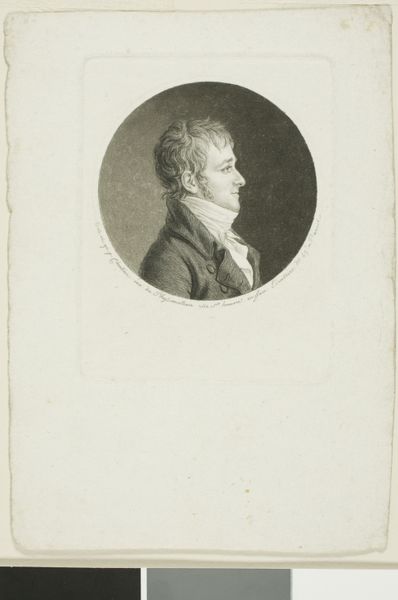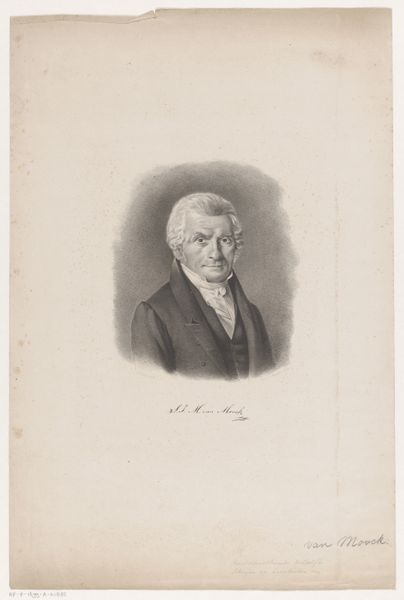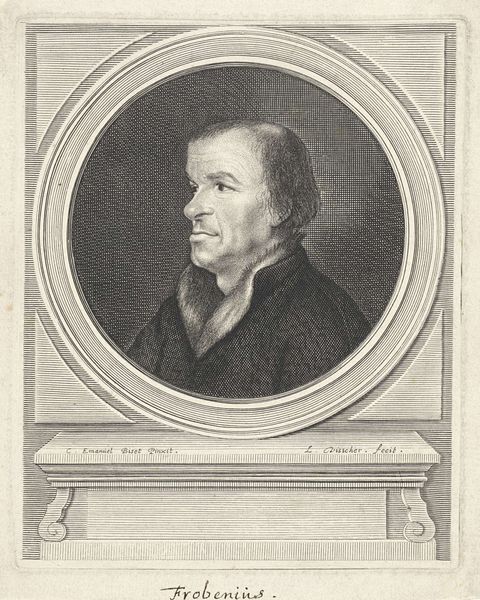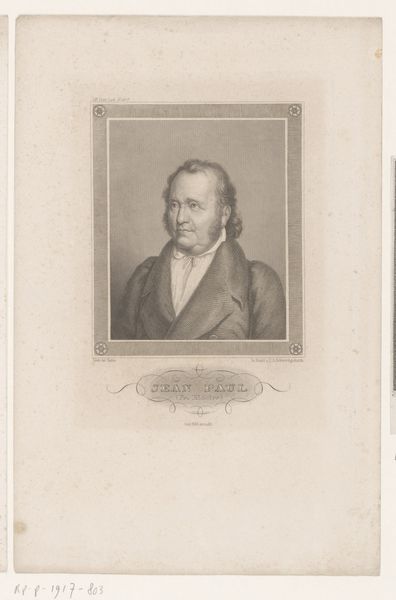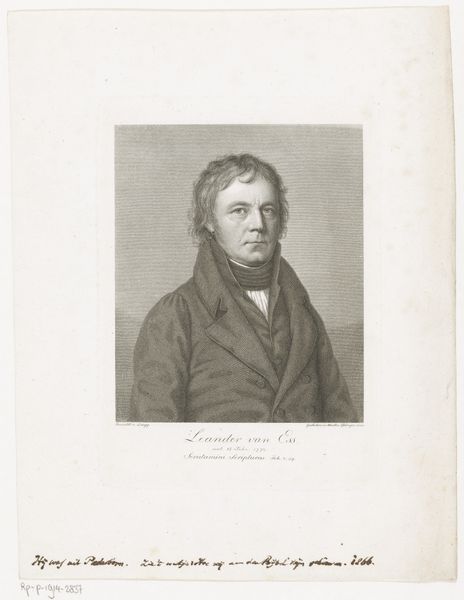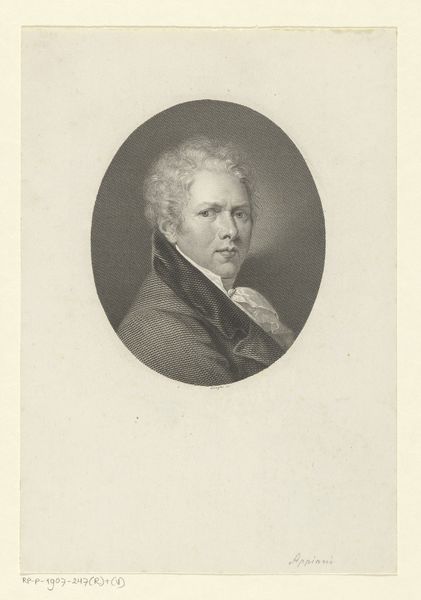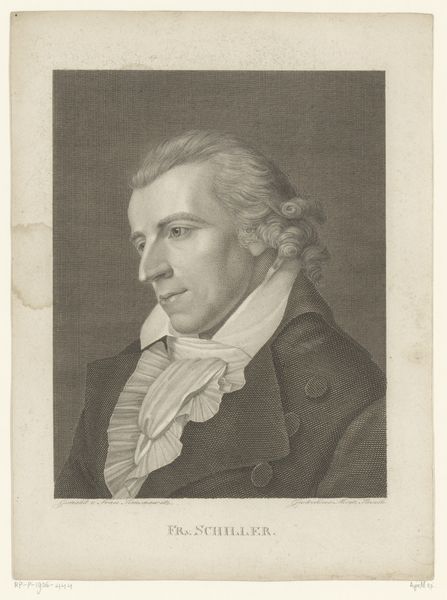
drawing, print, engraving
#
portrait
#
drawing
# print
#
charcoal drawing
#
historical photography
#
19th century
#
academic-art
#
engraving
Dimensions: height 174 mm, width 139 mm
Copyright: Rijks Museum: Open Domain
Curator: Today, we're observing "Portret van Johann Christian Gottfried Jörg," an engraving possibly produced between 1805 and 1835, after an earlier drawing. Editor: The subdued gray tones give it a rather somber and contemplative mood. His direct gaze certainly projects an air of intelligence and authority. Curator: Indeed. Note how the engraver masterfully uses line and shadow to define Jörg’s features, lending a sense of realism. The contrast between the tightly rendered face and the softer treatment of the landscape adds depth to the composition. Editor: Absolutely. Given Jörg's profession as a physician specializing in childhood illnesses, one wonders about the portrait's intentions. Was it meant to project him as a learned figure, perhaps to instill confidence in patients' families, in a time when medical care was quite different than what is considered evidence-based practice today? Curator: An insightful perspective. From a purely formal perspective, I am struck by the framing elements—the book and the flora. They structure the composition in such a way that emphasizes the subject, even though their symbolism also enriches our understanding. Editor: The book titled "Naturae" and the plants surrounding Jörg feel like intentional signifiers of his deep connection to the natural sciences, very much rooted in 19th century thinking. Considering the high rates of child mortality at the time, what did it mean to represent doctors like Jörg this way? This wasn’t a time of miracle cures. Curator: That is certainly a critical reading of the work. To return to its formal attributes for a moment: look at the linear precision of his tailored coat contrasted with the organic form of nature in the background, and the geometric and non-geometric forms that add tension. The clock on his person also invites closer inspection, both stylistically and metaphorically. Editor: Agreed. Considering the historical context can open avenues to understanding how identities and professions were shaped—and carefully promoted—through portraiture like this. Thanks for your analysis. Curator: A most fruitful dialogue! Indeed. I, too, found new layers of meaning.
Comments
No comments
Be the first to comment and join the conversation on the ultimate creative platform.
